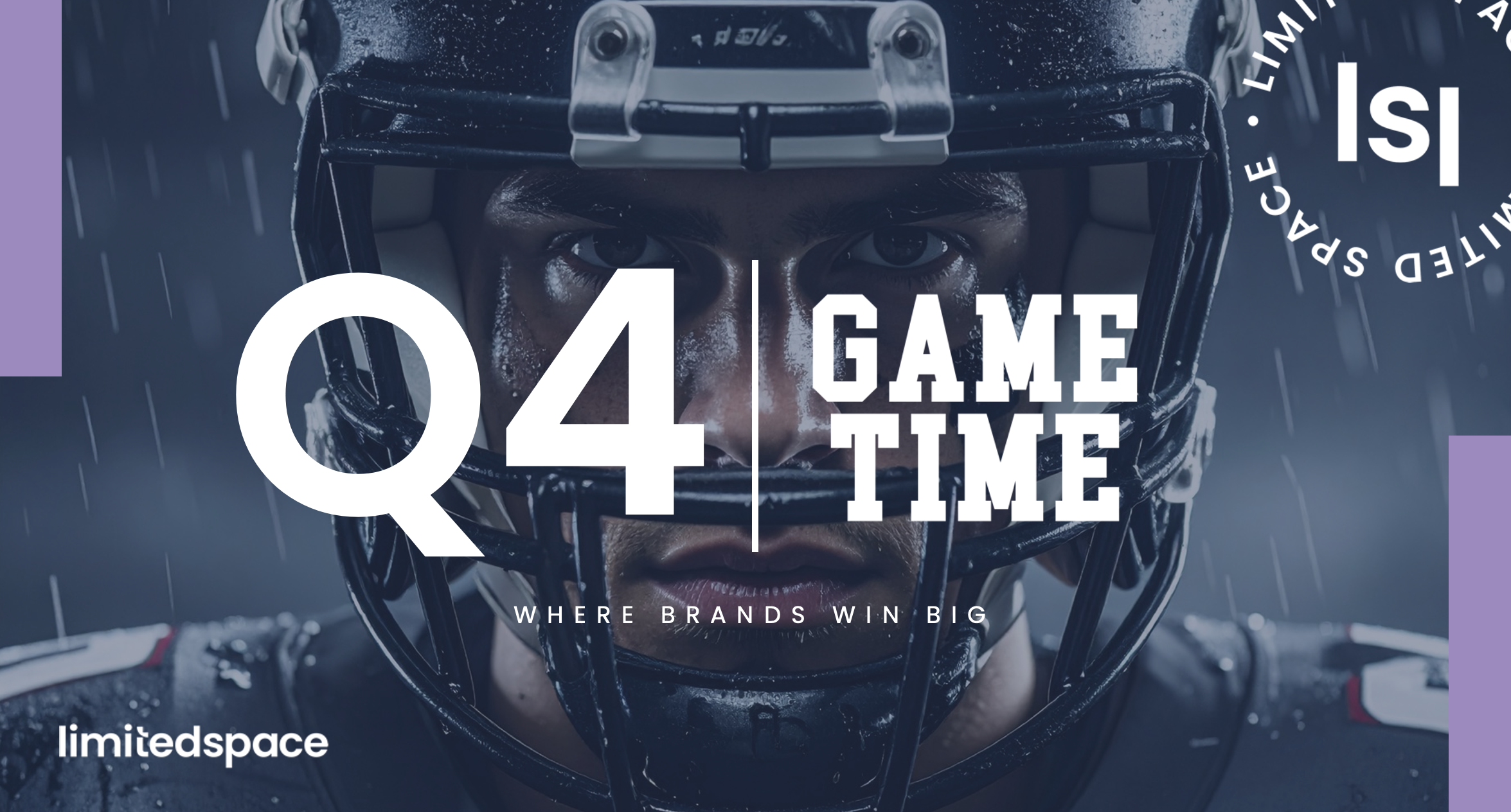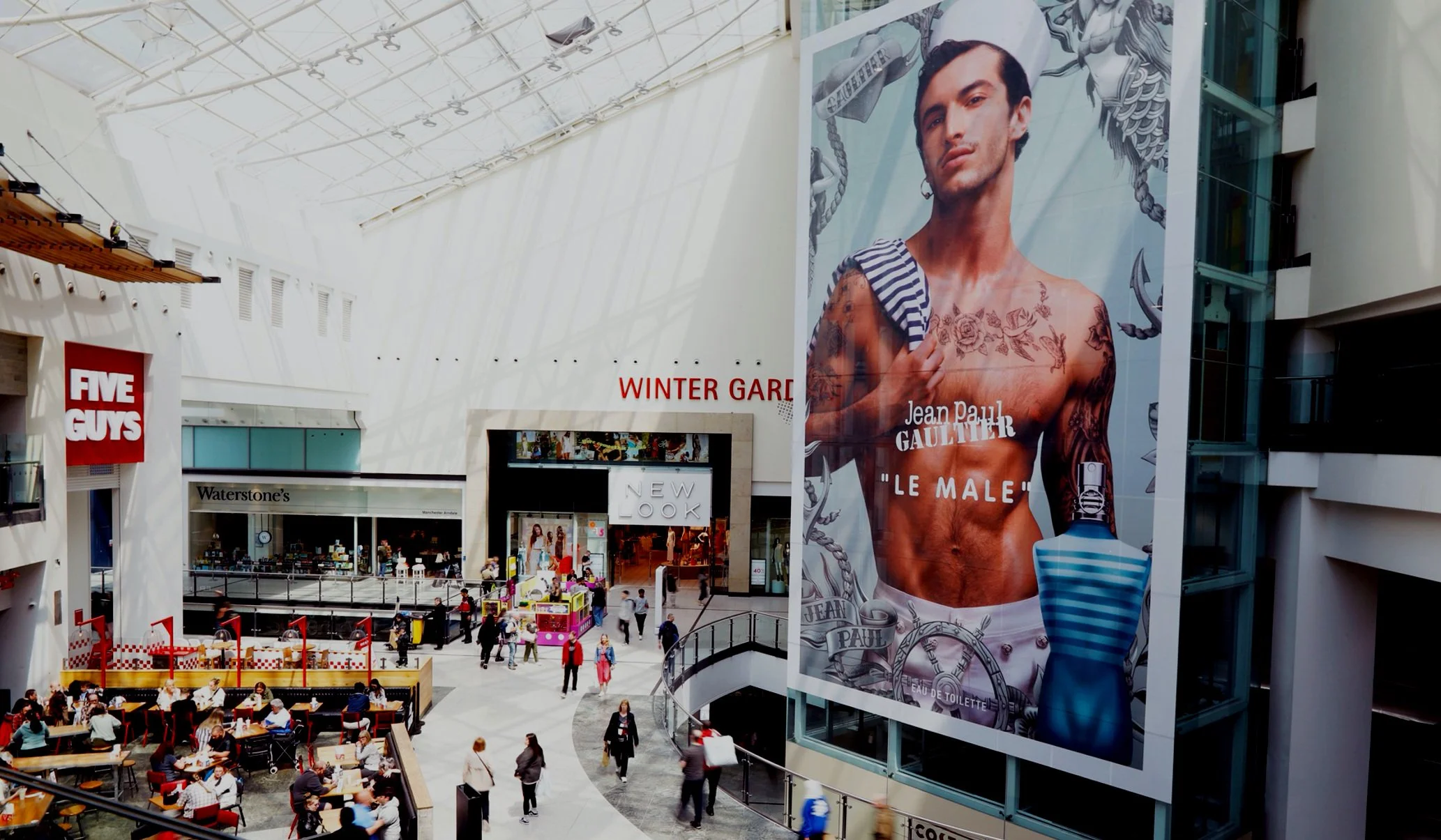Game Time : Winning Big with OOH in Q4
Q4 is Game Time
In a lot of sports, the fourth quarter is the final and most critical period of play, the moment when the outcome of the game is ultimately decided. It’s where everything comes to a head — the preparation, strategy, and effort of the first three quarters all build toward this decisive stretch. Teams go all-in, leaving nothing on the table in their fight to secure a win. It’s where legends are made, with iconic comebacks and unforgettable performances often unfolding in these final moments.
For advertisers, Q4 is a unique window of opportunity: consumer demand hits its annual peak, audiences are more engaged and active than at any other time, and competition intensifies as brands fight to capture attention and drive spend.
From Halloween through Black Friday and into Christmas and New Year, the final quarter represents a perfect storm of high footfall, strong purchase intent, and heightened emotion. For Out-of-Home (OOH), this creates the ideal conditions to reach audiences while they are on the move, primed to act, and ready to buy.
We’ve taken a closer look at what’s ahead this quarter — and how shopping centres can become a key part of the playbook for brands looking to win big.
Halloween
Halloween marks the first big consumer moment of Q4 and has grown into a major retail and cultural event. It represents an early surge in activity and a chance for advertisers to generate excitement ahead of the bigger peaks to come later in the season.
Shoppers are deeply engaged with Halloween, and mall-goers in particular stand out for their enthusiasm in comparison to national norms. They are far more likely to attend or host parties, decorate their homes, and spend on costumes or themed experiences. In fact, they are 22% more likely to dress up in fancy dress, 24% more likely to spend over £200 on Halloween celebrations, and 42% more likely to watch horror movies as part of their seasonal traditions.
This heightened engagement translates directly into increased traffic and visibility for brands. In 2024, our Data Jam data shows that Halloween impacts (Thursday 31st October 2024) were a +4% increase up on Thursday averages from the rest of the year, while the entire week saw impressions rise by 13% compared to surrounding weeks. Even October half-term saw a 12% increase, highlighting how Halloween activity creates a ripple effect of heightened engagement.
As the first key moment in Q4, Halloween sets the tone for what’s to come. Brands that act early can capture attention, build momentum, and establish strong awareness before the competitive holiday season kicks in.
Black Friday
As Q4 progresses, attention quickly shifts to Black Friday, which has become one of the biggest shopping events of the year. This is when retailers compete to capture spend from highly motivated, deal-hunting consumers.
Mall-goers are a key audience during this period. Over half say they wait to see what deals are released before making purchasing decisions, which shows how crucial real-time messaging can be. Many are also looking ahead to Christmas: 37% use Black Friday to buy Christmas gifts, which is 8% higher than the national average. Mall-goers are also higher spenders, with 38% planning to spend £200 or more — nearly a third higher than the typical shopper.
Physical stores remain central to Black Friday shopping behaviour. Almost half of mall-goers use in-store experiences to inspire their purchases, 18% higher than the national norm. Additionally, 55% visit stores to research deals before making a final decision, even if they ultimately purchase online. This underlines the vital role that shopping centres play as both sources of inspiration and decision-making hubs.
Certain product categories dominate the day, with electronics leading, followed by apparel, fragrances, toys, sporting goods, and makeup. Mall-goers over-index significantly in sporting goods and fragrances compared to the general population.
The effect on shopping centre activity is dramatic. On Black Friday, Data Jam recorded a 31% uplift in impressions compared to a standard day, reflecting the intensity of both footfall and shopper engagement.
To capitalise on this, brands need to focus on building anticipation in the lead-up to Black Friday, followed by high-impact activity on the day itself. Previous campaigns have shown the power of countdown messaging and dynamic content to create urgency and drive last-minute conversions.
Christmas
Christmas is the defining moment of Q4 — the period where shopping centres experience their highest levels of traffic and spending. Across November and December, footfall increases by an average of 31% (Hammerson Group), turning malls into hubs of activity, inspiration, and commerce.
For many shoppers, visiting a shopping centre is an essential part of the festive experience. Over half of mall-goers say that being in these environments makes them feel “Christmassy,” and 47% cite them as a key source of inspiration for gift ideas. Despite the growth of online shopping, physical retail remains incredibly important: mall-goers are 56% more likely to purchase gifts in-store compared to the average shopper.
Spending also rises significantly during this period. Mall-goers are 38% more likely to increase their Christmas budgets, and over half will make three or more shopping trips in the run-up to the big day.
And the opportunity doesn’t end on Christmas Day. The period between Boxing Day and New Year’s continues to deliver strong results, as 55% of mall-goers plan to shop post-Christmas sales. Many also spend this time on leisure activities such as visiting cinemas or travelling, creating opportunities for a wide range of brands to connect with audiences.
Opportunities
Our diverse advertising format portfolio incorporates both dynamic DOOH and high-impact ownership OOH sites, allowing us to cover any advertising brief. Whether you seek national coverage, brand fame, interactivity, flexible activations or local targeting, our versatility ensures we can meet your needs across the UK retail landscape.
DOOH
Nothing attracts and sustains an audience’s attention quite like DOOH; it’s the perfect brand storytelling platform. Motion, light and sound (uniquely in our case) combine to create an almost cinematic effect that elicits a long-lasting emotional response.
OOH
Our ownership platforms deliver brand fame through size, scale and strategic placement; this media doesn’t have an off-switch. These formats ensure that our clients benefit from reaching high volumes of people with large-scale, iconic and 100% owned media space.
Want to discuss this further? Please feel free to get in touch if you would like to talk to us about opportunities relating to anything mentioned above or any other queries.


















